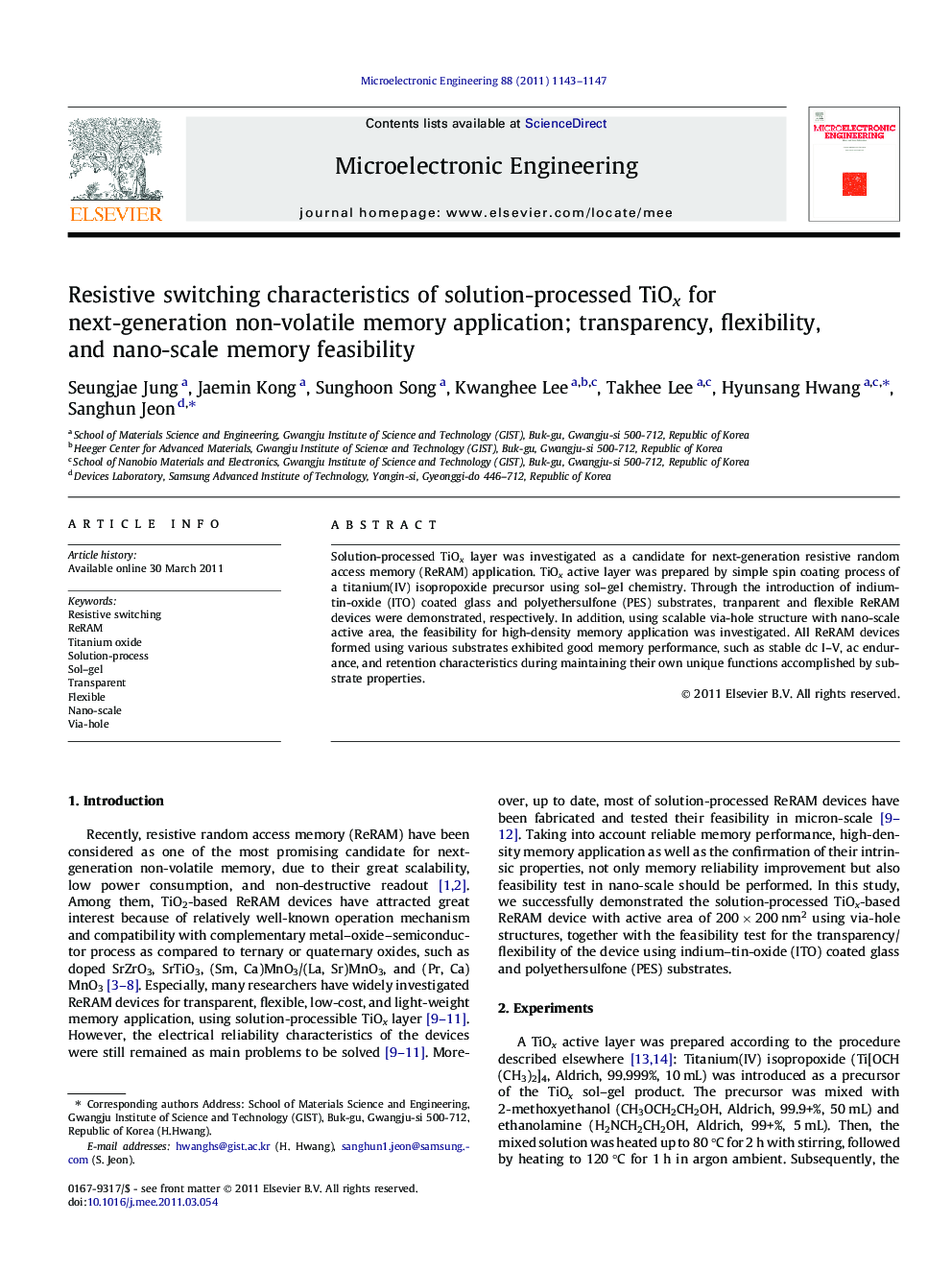| Article ID | Journal | Published Year | Pages | File Type |
|---|---|---|---|---|
| 540468 | Microelectronic Engineering | 2011 | 5 Pages |
Solution-processed TiOx layer was investigated as a candidate for next-generation resistive random access memory (ReRAM) application. TiOx active layer was prepared by simple spin coating process of a titanium(IV) isopropoxide precursor using sol–gel chemistry. Through the introduction of indium-tin-oxide (ITO) coated glass and polyethersulfone (PES) substrates, tranparent and flexible ReRAM devices were demonstrated, respectively. In addition, using scalable via-hole structure with nano-scale active area, the feasibility for high-density memory application was investigated. All ReRAM devices formed using various substrates exhibited good memory performance, such as stable dc I–V, ac endurance, and retention characteristics during maintaining their own unique functions accomplished by substrate properties.
Graphical abstractSolution-processed TiOx layer was investigated as a candidate for next-generation ReRAM application. TiOx active layer was prepared by simple spin coating using sol–gel chemistry. Through the combination with indium-tin-oxide coated glass, polyethersulfone substrate, and scalable via-hole structures, the feasibility of tranparent, flexible, and nano-scale ReRAM devices were demonstrated, respectively.Figure optionsDownload full-size imageDownload as PowerPoint slide
